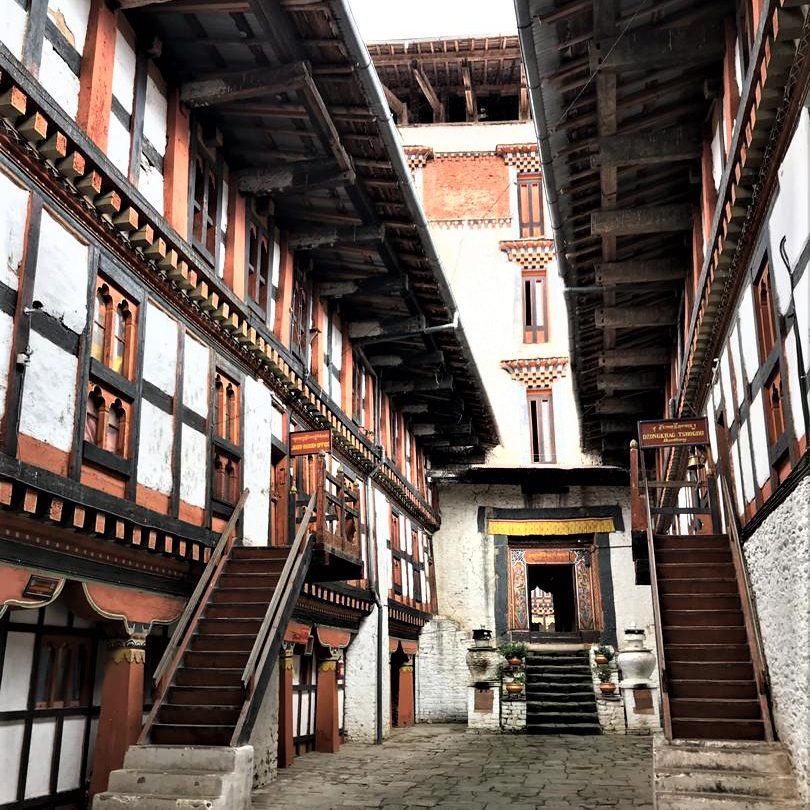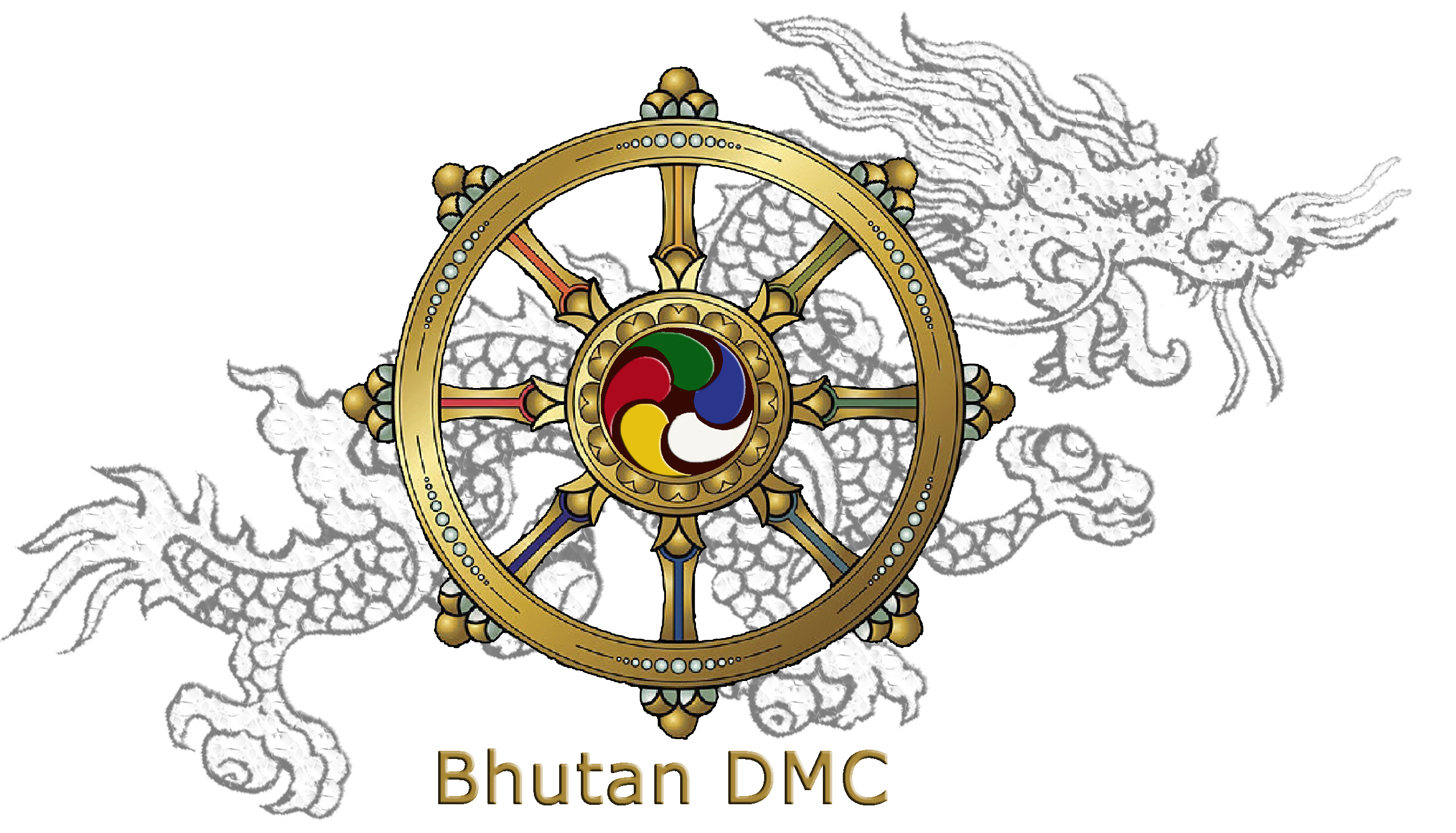2,600-4,500 m
Spans from
Religious heartland
of Bhutan
Jambey Lhakhang
Home to

About Bumthang
Bumthang has an individuality that charms its visitors and separates it from other regions. Comprising of four smaller valleys namely Tang, Ura, Choekhor and Chumey, the deeply spiritual region of Bumthang is shrouded in religious legend. Bumthang is also the traditional home to the great Buddhist teacher Pema Linga to whose descendants the present dynasty traces its origin.
Places of interest in Bumthang
Jambay Lhakhang
This monastery was built in the 7th century by Tibetan King, Songtsen Gampo. It is one of the 108 monasteries built by him to subdue evil spirits in the Himalayan region. Its present architectural appearance dates from the early 20th century.
Kurje Lhakhang
Situated before Jambay Lhakhang, Kurje Lhakhang consists of three temples. The one on the right was built in 1652 on the rack face where Guru meditated in the 8th century. Second temple is built on the site of a cave containing a rock with the imprint of Guru’s body and is therefore considered the most holy. The third temple was built in 1990s by Ashi Kesang, the Queen Mother. These three temples are surrounded by a 108 chorten wall.
Tamshing Lhakhang
Located across the river from Kurje Lhakhang, this temple was founded in 1501 by Terton Pema Lingpa, the re-incarnation of Guru Padsambhava. The monastery has very ancient religious paintings like 1,000 Buddhas and 21 Taras (female form of Buddhistava). The temple was restored at the end of the 19th century.
Jakar Dzong
Founded by great grandfather of the first Shabdrung, the Dzong was initially built as a monastery in 1549. It was upgraded after the Shabdrung had firmly established his power in 1646. The Dzong is now used as administrative centre for Bumthang valley and houses the regional monk body.
Konchogsum Lhakhang
It was built in the 6th century but was renovated in 1995, which accounts for its fresh look. It contained a large bell and it is said that when this bell was rung it could be heard all the way in Lhasa in Tibet. During the 17th century a Tibetan Army tried to steal this bell but was too heavy and they dropped it and cracked it. It is now displayed at the National Museum in Paro.
Chankhar Lhakhang
Beyond Jambay Lhakhang is Changkhar Lhakhang, the site of the palace of the Indian King Sindhu Raja. Because of its simplicity it looks like an ordinary village house. The original palace was built of iron and this is why it was named Chankhar, meaning iron castle. It was rebuilt in the 14th century by a Saint called- Dorji Lingpa.
Excursions around Bumthang
Tangbi Goemba
A walk of half an hour north of Kurje Lhahang leads to this monastery, founded in 1470 by Shamar Rinpoche of the Kagyupa religious school. The temple has two sanctuaries and a temple of terrifying deities. The sanctuary on the ground floor contains statues of past, present and future Buddha and three clay statues probably dating end of the 15th century. On the upper floor, the vestibule contains two remarkable paintings of Guru Rinpoche’s heaven and the Buddha Amitabh’s heaven.
Ngang Lhakhang
A few hours walk from the Tangbi Goemba is the small region of Ngang Yul (Swan Land) and this temple here is 100 m above the valley floor. The site was visited by Guru Rinpoche and present temple was built in the 15th century by Lama Namkha Samdup, a contemporary of Pema Lingpa. A three days festival is held here each winter with masked dances in honor of the founder of the temple.
Ura Valley
Jakar to Ura is 48 km, about one-and-a-half-hour drive. To reach here, the road climbs to amazingly open countryside, only occasionally running into forest. Large sheep pastures line the road up to 20 km behind the southern tip of the Tang valley. The route crosses Ura la pass (3,600m) with a magnificent view of Mount. Gangkhar Puensum. Villages in Ura have clustered houses, which is quite unusual in Bhutan. Above Ura village (3,100m) is a new temple dedicated to Guru Rinpoche. Inaugurated in 1986, it contains a huge statue of the master and remarkable paintings of the cycle of his teachings.
Membartsho (The Burning Lake)
Located in Tang valley, it is a wide spot on the Tang Chhu and is considered to be one of the greatest pilgrimage sites of Bhutan. Pema Linga found several of Guru Rinpoche’s hidden treasures here. The importance of this site is indicated by the extensive array of prayer flags and the small clay offerings called ‘Tse Tsa’ in rock niches.
Ugyenchholing Palace
Restored in 19th century, it is now housing the Family Museum, a place that will transport visitors to another world and time. The visitors can view permanent exhibits recreated to capture the ambience of the lifestyle of the Trongsa Penelop (Governor) Tshokey Dorji and his household. It also serves as retreat for those engaged in religious history. Bhutan's history truly unfolds here.
Tang Rimochen Lhakhang
Situated in Tang valley, it is a sacred place of Guru Rimpoche. A rock in front of temple bears a body print of the Guru and two khandroms (female celestial being). The site is named after the tiger stripe markings on the cliff. Footprints of the Guru and his consorts Mandarava and Yeshe Chhogyal are found below the lhakhang. Two large boulders nearby are said to be male and female jachungs (garudas).
Kunzangdrak Goemba
It is two hours walk above Chel Tang Valley and one of the most important sites related to Pemalingpa the great treasure discoverer in Bhutan, who also constructed the Goemba in 1488. Most of his sacred relics are kept here including the gilded stone bearing his footprint.
